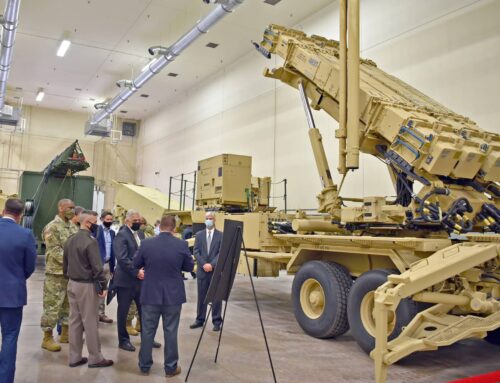The HASC Subcommittee on Seapower and Projection Forces is out with its portion of the NDAA and there are interesting provisions that, like has happened with the Air Force, would prevent the Navy from managing its own inventory, pursuant to the warfighting needs of the combatant commanders.
But before we get to that, we turn your attention to the National Sea-based Deterrence Fund (NSBDF): a bad idea that refuses to die. We sounded the alarm about this plan several years ago. To put it in a nutshell, this would take the responsibility for paying for the next ballistic missile submarine, the Columbia class, and put it into a new fund in the Office of the Secretary of Defense. This is supposedly because nuclear missile submarines are a “national” responsibility and not a Navy responsibility. This is specious on its face. All weapon systems are “national” assets. All this would accomplish is relieving funding pressure on the Navy’s shipbuilding account, which is the real plot here. And, by the way, the Air Force is sure to want just such a fund for the next generation nuclear bomber and Intercontinental Ballistic Missiles.
Thus far, the Congressional appropriators haven’t been persuaded that this is a good idea. Thank goodness. But bill language in the HASC version of the NDAA would steadily increase what could be funded out of the NSBDF by changing the statutory language from, “properly phased installment payments” to add, “and full funding for first two Columbia class submarines.”
This is, and has always been, a bad idea.
Then there is language prohibiting the retirement of Littoral Combat Ships 3 and 4 until the Secretary of the Navy certifies the completion of operational tests on all mission modules.
There is a requirement for the Secretary of Defense to report on the costs (among other things) of implementing the recent planning guidance from the Commandant of the Marine Corps. This may be a sneaky way of trying to slow down the Commandant’s plans, which break a lot of Congressional rice bowls like, cough – the F-35 – cough!
The Navy is required to hand over the Integrated Force Structure Assessment to Congress prior to being allowed to retire any ships.
And, finally, the bill would statutorily bar the retirement of any nuclear powered aircraft carrier (and they’re all nuclear powered these days) until the ship has had its first reactor refueling. This would put the Navy in the wildly expensive position of having to refuel the reactor on every carrier, even if the Navy has decided to reduce the inventory of carriers. A certain defense contractor is clicking its heels over this development!
We’ve been saying this for awhile now: on those rare occasions the Pentagon is looking to retire or change programs to save money, the Congress should get out of the way. If this keeps up, we’re looking at Pentagon spending to continue on a sharp upward trajectory.











Get Social